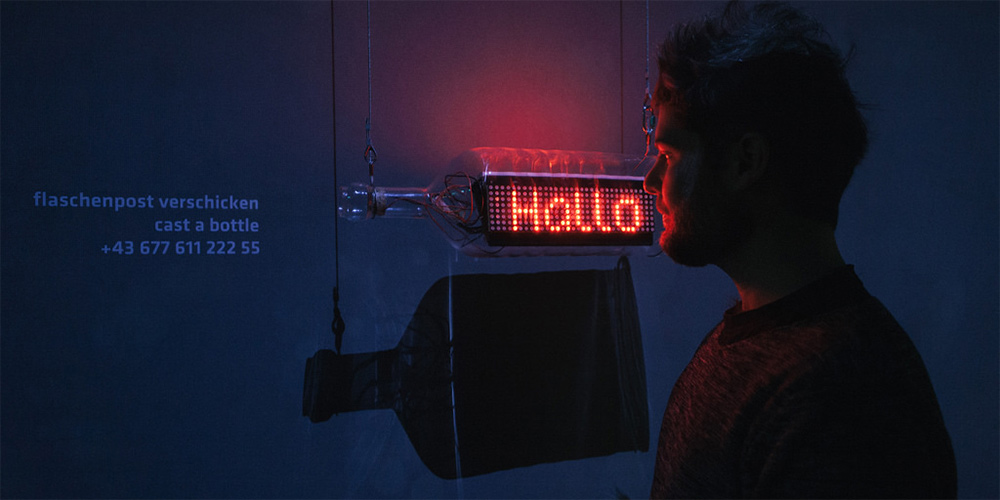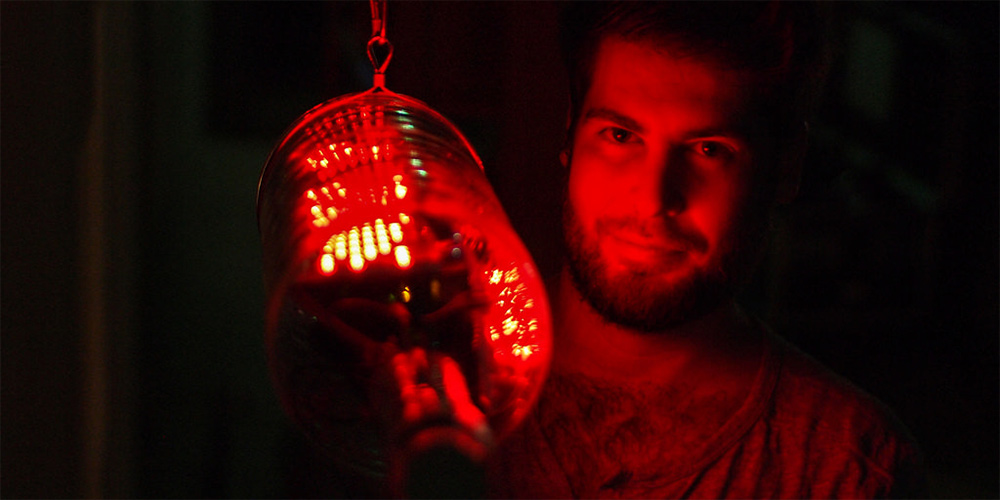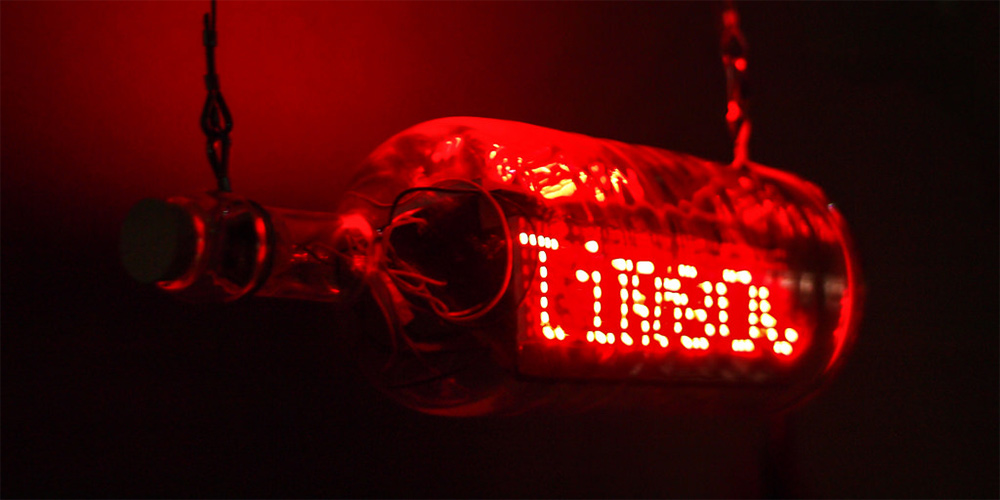Following up on “The Eye Named Frank,“ his work in last year’s TIME OUT exhibition, Julian Reil of Linz Art University’s „Time-based and Interactive Media program“ has also contributed to TIME OUT .03. In “Bottleneck,” one of the works on display, the message-in-a-bottle concept goes digital. This nostalgic mode of communication has been augmented with SMS so the message can be input even while the bottle is bobbing along on the water’s surface.
A bottle with a mobile phone number—what inspired you to create this?
Julian Reil: The idea just came to me. At first, I only had an image and a basic concept in mind, but then I gave some more thought to what it would actually look like. The basic principle is a hand-blown bottle specially designed for this purpose, in that the base can be removed to perform maintenance. Inside the bottle are two LED panels like the ones that used to be used to display crawl text at airports or train stations. They’re connected to an Arduino system that, in turn, is hooked up to a GSM module.
So, you can insert digital messages into the analog bottle …
Julian Reil: Exactly. All you do is write an SMS and send it to this number, and then it appears on the display inside the bottle. In principle, this functions worldwide wherever there’s access to a mobile telecommunications network—so it actually doesn’t matter where the bottle’s located. The installation is powered by a battery—I originally wanted to use a solar panel but the voltage wasn’t high enough for efficient operation. The battery lasts for about eight hours; however, the device features an automatic charge & discharge mode, so when the bottle’s upright, a mercury switch turns on charge mode, and when it lies on its side, the current flows.

Photo: Florian Voggeneder
„Bottleneck“—what’s the title refer to?
Julian Reil: In the field of information technology, a bottleneck refers to a subsystem that slows down the flow of information or a system’s performance. For instance, even if my computer has an excellent graphic card and a fast processor, if I don’t have enough storage space, there’s a bottleneck in the system. With today’s digital media, an SMS can be sent at any time to any addressee anywhere in the world. Here, we’re merging old and new means of communication. With the analog bottle that was used to send a message without a predetermined addressee, you had to hope to be able to convey a general message to an unknown person who’s relevant to the sender’s needs. So, this is a bottleneck, since the message can be seen only by someone who happens upon the location where the bottle ends up. This is a subject that I also treated in my Bachelor degree project.

Photo: Martin Hieslmair
So, this means that the digital message-in-a-bottle actually can be set adrift on a body of water.
Julian Reil: Yes indeed. My work of art is designed to float away. But then it’s gone! (laughs) It’s a finished object, but it would also be nice to produce a series of them, to enhance and upgrade it, and then to really launch a lot of bottles. A prototype floated down the Danube once. I’ve also built a GPS transmitter into one—that was my second idea, which included setting up a website with a map so you could see where the bottle was at the moment.
Does it bother you that after your bottle is sent on its way, the message inside is constantly changing?
That’s precisely what I find so fascinating about this. There’s no censorship, so anyone who has this number can input any message they want, anytime, from anywhere.
